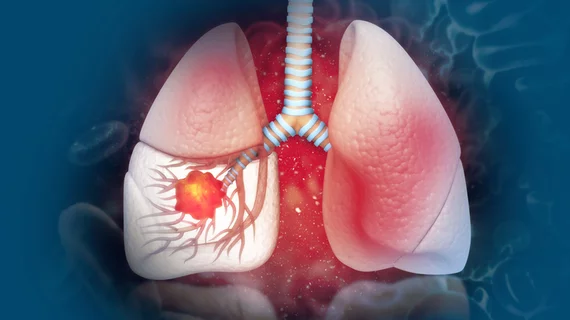A new deep learning model based on PET/CT data can help determine what type of treatment will be most beneficial for patients with a common type of lung cancer.
Moffitt Cancer Center researchers used radiomic information from non-small cell lung cancer patients treated at one of four Chinese hospitals to create and test its model. It utilizes the F-18 radiotracer to pinpoint abnormal glucose metabolism and more accurately define tumors, they explained Friday in Nature Communications.
After testing, the technique accurately identified those with the epidermal growth factor receptor, a common mutation in patients with this type of lung cancer, Wei Mu, PhD, a postdoctoral fellow in Moffitt’s Cancer Physiology Department said.
"Prior studies have utilized radiomics as a noninvasive approach to predict EGFR mutation," Mu, first author of the study, added in a statement on Friday. "However, compared to other studies, our analysis yielded among the highest accuracy to predict EGFR and had many advantages, including training, validating and testing the deep learning score with multiple cohorts from four institutions, which increased its generalizability."
Essentially, the deep learning radiomics model classifies patients’ receptor status by generating an EGFR score. And after validating these grades on individuals from two other institutions, Mu et al. believe it can be used to determine treatment options. Those with the EGFR mutation respond better to tyrosine kinase inhibitor treatment compared to immune checkpoint inhibitors, they noted.
"We found that the EGFR deep learning score was positively associated with longer progression-free survival in patients treated with tyrosine kinase inhibitors, and negatively associated with durable clinical benefit and longer progression-free survival in patients being treated with immune checkpoint inhibitor immunotherapy," Robert Gillies, PhD, chair of the Cancer Physiology Department explained.
Next up, the researchers plan to complete additional studies to gauge if their model can be used as a clinical decision support tool for additional treatments.

